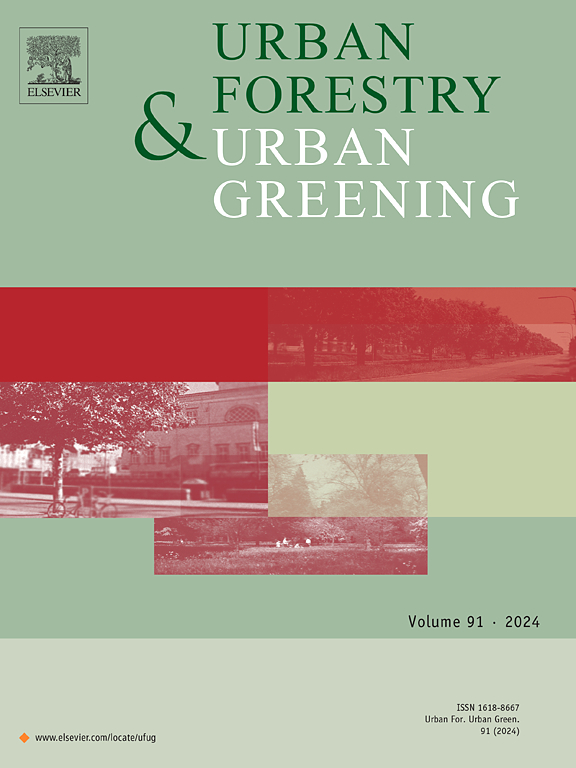Level-up urban conservation by increasing vegetation complexity
IF 6
2区 环境科学与生态学
Q1 ENVIRONMENTAL STUDIES
引用次数: 0
Abstract
Greenspaces provide important habitats for species in urban environments, and their effective management is crucial to achieving biodiversity protection goals. Here we investigate how three habitat features that are readily influenced by management—tree cover, vegetation complexity and water area—are associated with bird richness and species presence within urban greenspaces. Analysing remote sensing and citizen science data from Brisbane, Australia, we find that bird species richness within urban greenspaces has a strong positive association with vegetation complexity, but no significant association with tree cover or water cover. These results suggest that urban greenspace management strategies that focus simply on increasing tree cover might overlook valuable biodiversity enhancement opportunities. We also explore how these three management goals influence the presence of individual species and find that the effect of each variable varies among species. These results highlight the importance of formulating urban greenspace management plans with specific objectives in mind—a particular management approach will benefit some species, but harm others. Management to increase vegetation complexity is likely more beneficial for overall bird species richness than simply increasing the area coverage of vegetation or waterbodies.
通过增加植被的复杂性来提升城市保护水平
绿地为城市环境中的物种提供了重要的栖息地,绿地的有效管理是实现生物多样性保护目标的关键。在这里,我们研究了容易受管理影响的三个栖息地特征——树木覆盖、植被复杂性和水域面积——与城市绿地中鸟类丰富度和物种存在的关系。通过对澳大利亚布里斯班的遥感和公民科学数据的分析,我们发现城市绿地内鸟类物种丰富度与植被复杂性有很强的正相关关系,而与树木覆盖和水覆盖没有显著的相关关系。这些结果表明,仅仅关注增加树木覆盖率的城市绿地管理策略可能会忽视宝贵的生物多样性增强机会。我们还探讨了这三个管理目标如何影响单个物种的存在,并发现每个变量的影响在物种之间是不同的。这些结果强调了制定具有特定目标的城市绿地管理计划的重要性——特定的管理方法会使某些物种受益,但会损害其他物种。增加植被复杂性的管理可能比简单地增加植被或水体的面积覆盖更有利于整体鸟类物种丰富度。
本文章由计算机程序翻译,如有差异,请以英文原文为准。
求助全文
约1分钟内获得全文
求助全文
来源期刊

Urban Forestry & Urban Greening
FORESTRY-
CiteScore
11.70
自引率
12.50%
发文量
289
审稿时长
70 days
期刊介绍:
Urban Forestry and Urban Greening is a refereed, international journal aimed at presenting high-quality research with urban and peri-urban woody and non-woody vegetation and its use, planning, design, establishment and management as its main topics. Urban Forestry and Urban Greening concentrates on all tree-dominated (as joint together in the urban forest) as well as other green resources in and around urban areas, such as woodlands, public and private urban parks and gardens, urban nature areas, street tree and square plantations, botanical gardens and cemeteries.
The journal welcomes basic and applied research papers, as well as review papers and short communications. Contributions should focus on one or more of the following aspects:
-Form and functions of urban forests and other vegetation, including aspects of urban ecology.
-Policy-making, planning and design related to urban forests and other vegetation.
-Selection and establishment of tree resources and other vegetation for urban environments.
-Management of urban forests and other vegetation.
Original contributions of a high academic standard are invited from a wide range of disciplines and fields, including forestry, biology, horticulture, arboriculture, landscape ecology, pathology, soil science, hydrology, landscape architecture, landscape planning, urban planning and design, economics, sociology, environmental psychology, public health, and education.
 求助内容:
求助内容: 应助结果提醒方式:
应助结果提醒方式:


